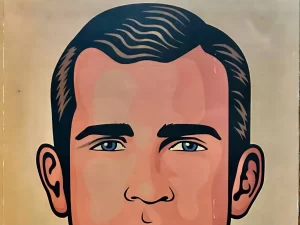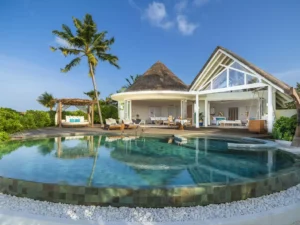The family history told by the master himself
Table of Contents
1882 – 1937 FIRST PERIOD “DOMINGO ESTESO”.
Domingo Esteso is one of the greatest exponents in the history of the Spanish guitar. He began working as an apprentice in the workshop of Manuel Ramírez, and after his death, he worked for his widow, putting his name next to the label.
He worked alongside Santos Hernández and Enrique García in the workshop, the three of them becoming the outstanding successors of Manuel Ramírez’s workshop.
The guitars of this period, nowadays, still have special characteristics that differentiate them from all the others, either for their exquisite workmanship or for their sound characteristics.
Later, Domingo Esteso set up his own business and moved to 7 Gavina Street, together with his wife, Nicolasa Salamanca, who varnished the guitars. This was his most prolific period (you can still see pieces of great beauty and impeccable workmanship which, with the passing of the years and the luck of fate, fell into the hands of people who knew how to treat them as true works of art and which can still be enjoyed today).
Many of these guitars were sold outside Spain, especially in Argentina (a label was made for the house of Romero y Fernández in Buenos Aires), mainly due to the high cost of the guitars and the economic situation in Spain at that time.
In 1926, his nephew and my uncle, Faustino Conde, joined the workshop, and in 1929, my father, Mariano Conde; this was the seed that gave rise to the next step in the firm’s succession.
With Domingo Esteso, they learned his technique and his know-how in the art of Spanish guitar making. They remained with him until his death in 1937, in the middle of the civil war. He died of a respiratory illness, caused by a draught in the workshop and the lack of penicillin. Until 1939 he continued to build guitars but on a very small scale due to the Spanish Civil War.
1937 – 1959 SECOND PERIOD “WIDOW AND NEPHEWS OF ESTESO”.
After the civil war, the workshop continued under the name of VIUDA Y SOBRINOS DE ESTESO due to the respect they had for their aunt Nicolasa Salamanca, which they maintained until her death in 1959.
At this time the younger brother of Faustino and Mariano, Julio, joined the workshop. They continued with their uncle’s school, introducing small changes in the guitar template, mainly.
Before 1953 they designed a new head for the first guitars, which later became popularly known as the “half-moon head”, and was used indistinctly with the traditional Domingo Esteso head, as well as introducing some new mosaics.
This period is characterised by the warmth of the sound that they brought out in their guitars, the result of the union of tradition with the continuous search for improvements in the quality and quantity of sound that were carried out by the quality craftsmanship of my father, Mariano Conde Salamanca.
Among the professionals who played these guitars, Regino Sainz de la Maza, Alirio Díaz, Quintín Esquembre, Manolo de Huelva… are worth mentioning.
In 1957, the Pozuelo de Alarcón workshop was opened, which had five guitar makers. The guitars made in this workshop had no signature or stamp on the headstock and were later known as “guitarras de segunda”.
1959-1989 THIRD PERIOD “CONDE BROTHERS, NEPHEWS OF ESTESO”.
When Nicolasa Salamanca died, the brothers decided to call themselves firstly “SOBRINOS DE DOMINGO ESTESO-CONDE HERMANOS” and later “HERMANOS CONDE-SOBRINOS DE DOMINGO ESTESO”.
This was the most prolific period for the brothers in the construction of guitars that were in demand by the great majority of professionals, including: Niño Ricardo, Sabicas, Melchor de Marchena, Mario Escudero, Paco de Lucia, Paco Cepero, Enrique de Melchor, the “Habichuelas”, Oscar Herrero, Gerardo Nuñez, Rafael Riqueni, “Tomatito”, Al di Meola, John McLaughlin, Bob Dylan, Cat Stevens…
In 1960, the “half-moon head” was generalised in the first guitars, which became the hallmark of the firm, and also the measurements of the template were modified, the inside of the top and new mosaics were introduced, inspired by the embroidery of past centuries.
At this time, my father and my uncle introduced, for the first time, the Palo Santo wood in the flamenco guitar, traditionally used for the classical guitar, and with the help of Paco de Lucia it became popular as a flamenco concert guitar. This guitar is called “negra” in the flamenco world, as opposed to the “blanca” made of cypress wood.
This gave it a characteristic sound, with great volume and its own personality, recognised by the guitar world.
In 1971, I, Felipe Conde, joined the workshop at calle Gravina 7, under the guidance of my father, Mariano Conde, and my uncle Faustino Conde, the beginning of the next generation.
From my father I learnt, fundamentally, two things that will mark my entire professional career: on the one hand, respect for tradition and good workmanship in the construction of guitars and, on the other hand, contact with the public and the professional, which will give me the key to improve and investigate the sound of my guitars.
Years later my brother, Mariano Conde Jr. joined the workshop.
1980 – 2010 FOURTH PERIOD “CONDE HERMANOS SUCESORES SOBRINOS DE ESTESO”.
In 1980, my father, Mariano Conde, established a new workshop in Calle Felipe V nº 2 and together with his sons began a new journey in the history of the family.
Until the death of my uncle Faustino in 1988, we were linked to the workshop at 7, Gravina Street. From that moment on, the workshop at Felipe V Street began to work independently.
In 1989, my father Mariano Conde died and my brother and I took over the workshop.
In the first phase there was a continuity in the construction of guitars and later, taking advantage of the improvements in materials, tools and technology, we gave a boost to the construction, always maintaining the traditional sound and the handmade way of building, making each of the guitars an instrument with its own history and personality.
Model Felipe V, this guitar is made of wood selected for its beauty, quality and antiquity, with great marquetry work and a meticulous finish.
Model Reedición Domingo Esteso and Model Viuda y Sobrinos de Esteso from 1953 (this guitar was inspired by a guitar from 1953 commissioned by Tim Miklaucic, owner of Guitar Salon International). These two models are built with the same templates, antique wood and original soleras.
The guitarists who currently use our guitars, many, are the same as in the previous era, as they have remained faithful to our sound, incorporating new generations of guitarists such as Javier Conde, Roberto Morón, Lenny Kravitz, David Byrne, Sergio Vallin and a long etcetera.
During this period I developed professionally, consolidating the knowledge I acquired with my father and uncle and I took the company all over the world, attending international music fairs such as Frankfurt, NAMM, Japan, responding to the great interest that has arisen in Spanish art and culture all over the world.
2010 – 2021 FIFTH EPOCH “FELIPE CONDE GUITARRERO”.
In 2010, at the height of my professional and personal maturity, I began a new era together with my children with great enthusiasm and energy.
The memory of my father, my great teacher, is present in these moments. From him I learned everything about my profession, transmitting to me, as only he knew how to do, a taste for things well done and a close relationship with the guitarist.
I have a great deal of experience and a love for the tradition I come from.
I entered the guitar making workshop at 7 Gravina Street in 1971, when I was only 14 years old.
Together with my father Mariano, my teacher, and my uncle Faustino, I began my apprenticeship in guitar making, combining it with my studies.
During these years, I came into close contact with guitarists of the stature of Niño Ricardo, Regino Sainz de la Maza, Sabicas, Mario Escudero, Melchor de Marchena, Paco de Lucía and a long etcetera.
I have always tried to keep the guitarist-guitar maker relationship alive, as I consider dialogue to be fundamental, which leads me to constantly improve, within tradition, the construction of guitars, making my profession a passion, a way of life.
In this new stage I am accompanied by my two children, María and Felipe, who have been learning the trade in the new workshop for several years. To be able to teach my children everything I know about this trade is a great privilege and a source of pride for me. María and Felipe have thrown themselves into the art of guitar making and it is clear to them that this will be their vocation. They have already built several guitars in search of their own style, always backed by the great tradition that precedes them.
Thinking of having a more direct contact and creating a more comfortable and personal atmosphere to try out the guitars, I have moved to the premises in calle Arrieta nº 4, opposite the old workshop in calle Felipe Vº (corner of Arrieta nº 3) and we welcome there all professionals and amateurs interested in our guitars.

















